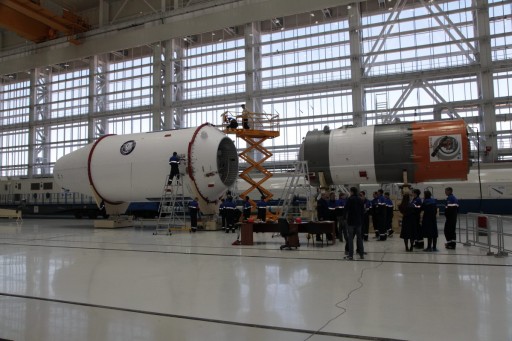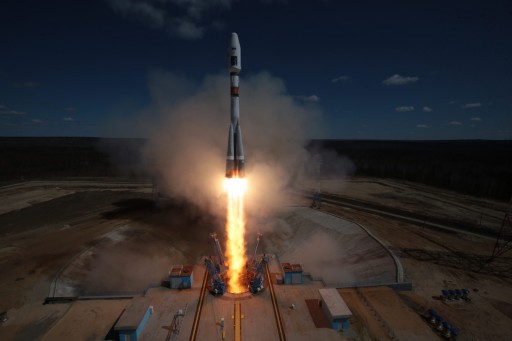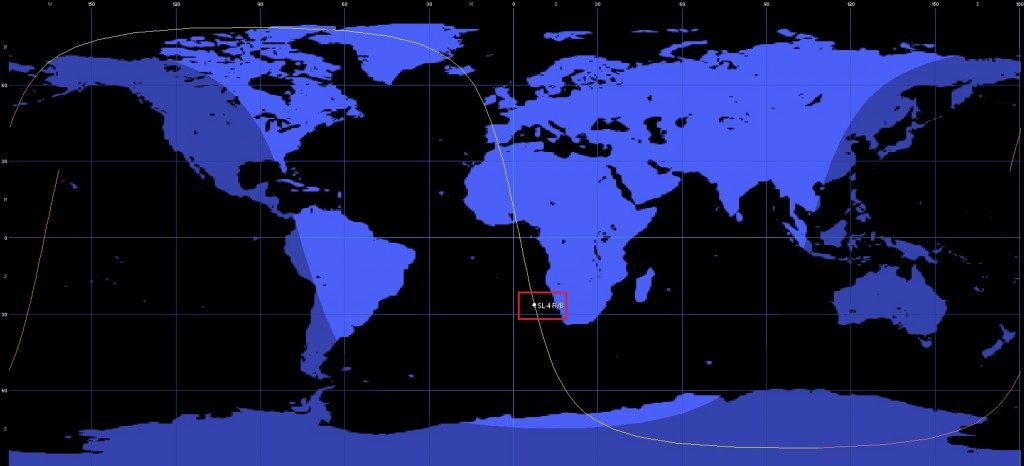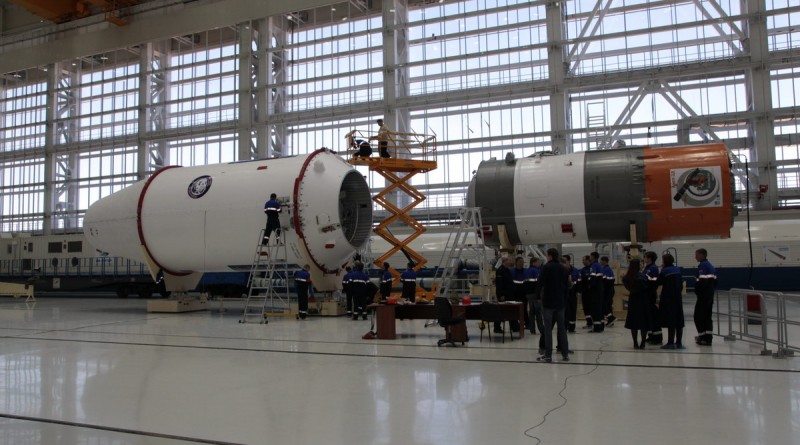Re-Entry: Soyuz Rocket Stage from first Vostochny Launch


The third stage of the Soyuz rocket conducting the maiden flight from Russia’s new Vostochny Cosmodrome re-entered the atmosphere on Saturday, April 30, 2016 after spending just over two days in orbit.
The Soyuz rocket lifted off from Vostochny at 2:01 UTC on Thursday and successfully achieved orbit less than nine minutes after launch with the Block I third stage entering an orbit of 187 by 203 Kilometers, inclined 97.3°.
Starting out in this Low Earth Parking Orbit, the Volga upper stage successfully executed a pair of engine burns to lift its three satellite payloads into a Sun Synchronous Orbit near 490 Kilometers in altitude. Separation of the Lomonosov, AIST-2D and SamSat-218D satellites occurred around two hours into the flight and Volga successfully executed a deorbit maneuver for a targeted re-entry over the Pacific Ocean seven hours after launch.
Re-Entry of the empty Block I stage occurred at 11:00 UTC on Saturday off the west coast of southern Africa. The 6.7-meter long rocket stage burned up to a large extent when slamming into the atmosphere at a speed of 7.8 Kilometers per second, any surviving fragments will have impacted in the ocean, well off the South African coast.
NORAD ID: 41467
Object: SL-4 R/B
Origin: Russia
Type: Modified Block I Soyuz Upper Stage
Mass: 2,355 Kilograms
Launch: April 27, 2016 – 02:01:21 UTC
Launch Site: 1S Vostochny Cosmodrome
Launch Vehicle: Soyuz 2-1A
Ascent Duration: 8 Minutes & 46 Seconds (Soyuz)
Payload: Lomonosov (MVL-300), AIST-2D, SamSat-218A
Initial Orbit: 187 x 203 km, 97.3°
Last Orbit Data: 168 by 182km, 97.3°
Orbital Lifetime: 36 Orbits
Re-Entry Prediction: April 30, 2016 – 11:00 UTC +/-1 Minute
Re-Entry Location: Atlantic Ocean, off the coast of southern Africa
Re-Entry Zone


